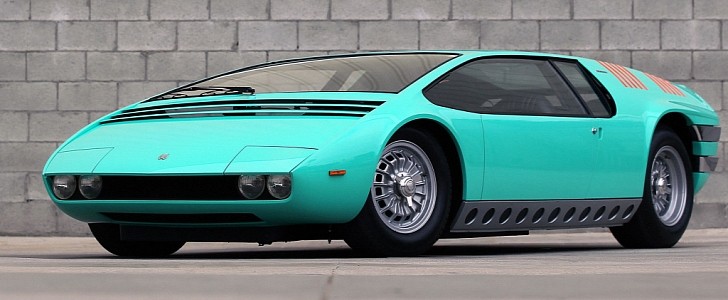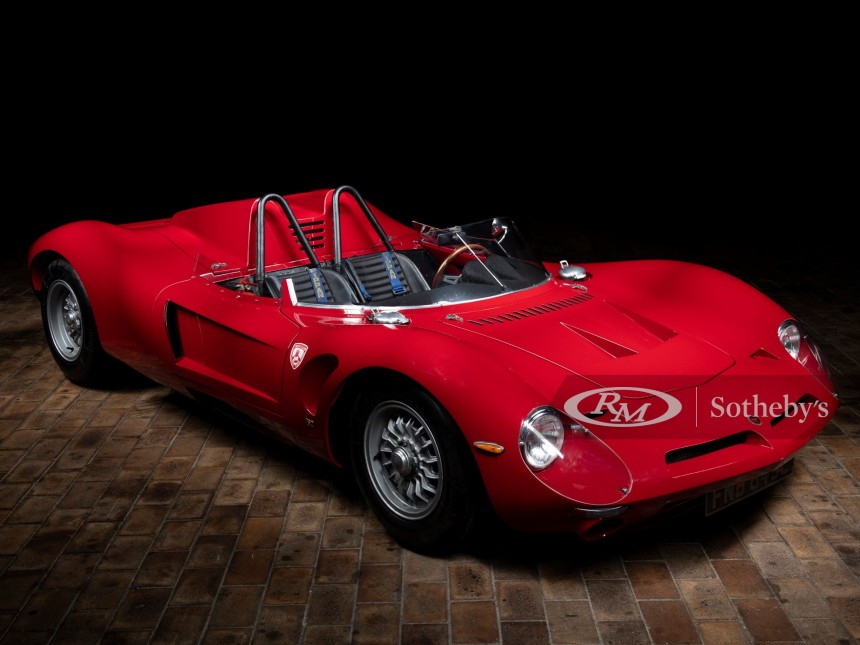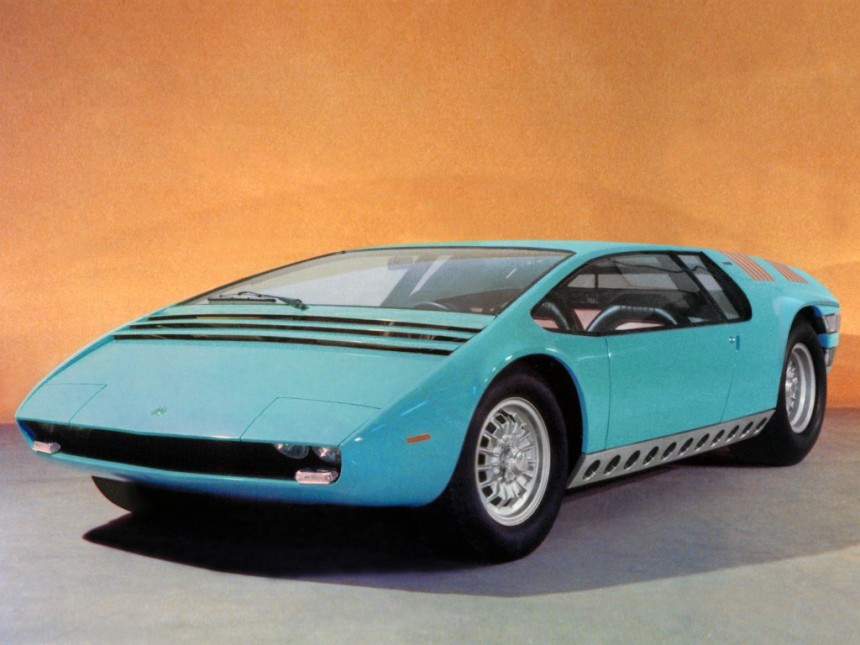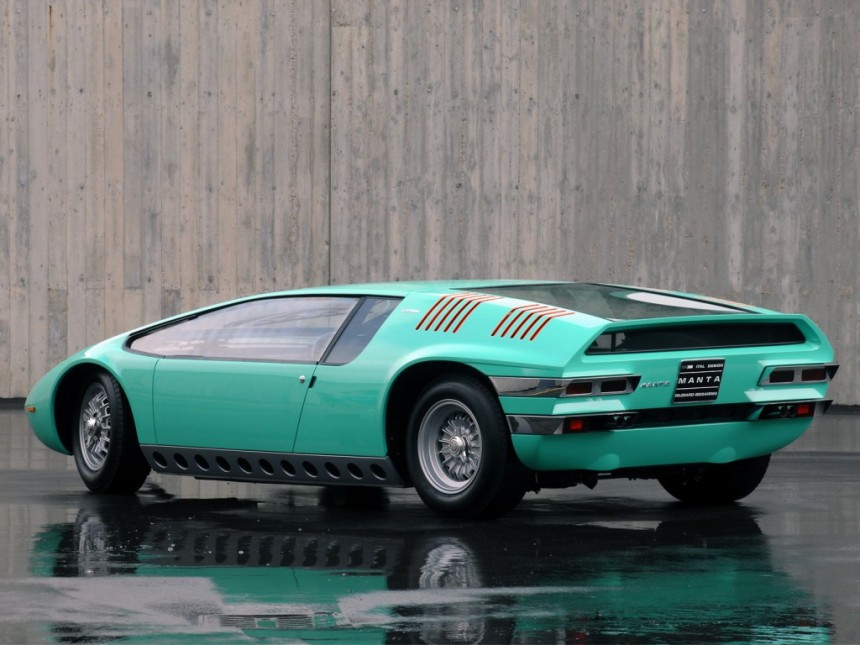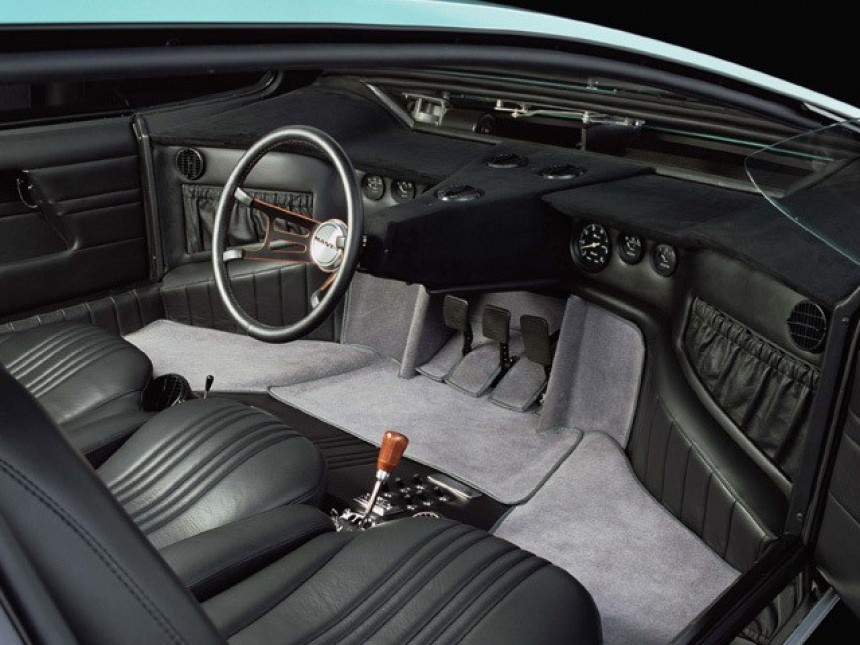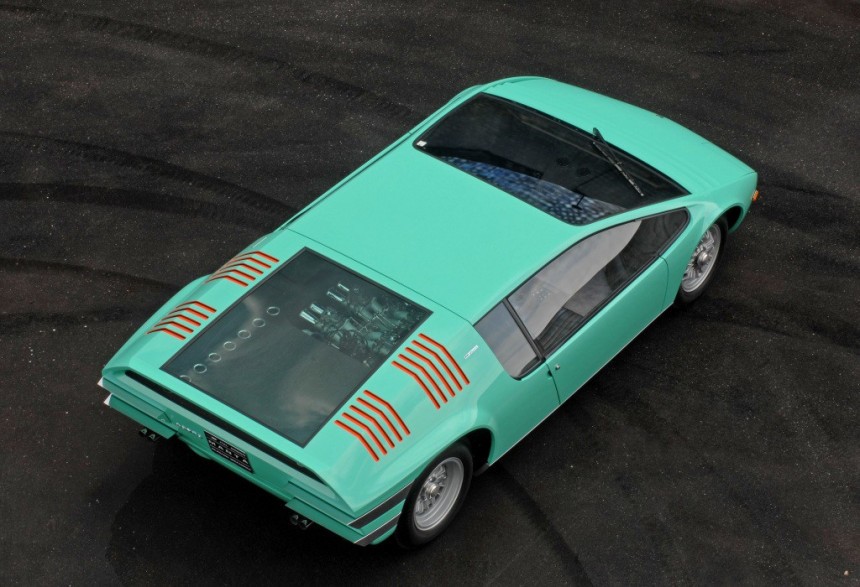Giotti Bizzarrini, the mastermind behind the iconic Ferrari 250 GTO and Lamborghini's first V12 engine, started his own company, Bizzarrini S.p.A, in 1964. The short-lived Italian firm built just a few cars, but the production run included the impressive 5300 GT road car and the innovative P538 race car. The latter spawned the Manta, a Giugiaro-built concept that pioneered the one-box car design.
It was 1968 when the Manta debuted at the Turin Auto Show and Bizzarrini had already abandoned the P538 project after only five units were built. Giorgetto Giugiaro, who had worked for Fiat, Bertone, and Ghia, had just set up his own studio, Ital Design, in February that year.
To promote his new business, Giugiaro wanted to showcase an eye-catching and high-performance design concept at the 1968 Turin Motor Show, scheduled in October. With only eight months until the event, Giorgetto set out to source a mid-engined chassis for his project. And it turned out to be a difficult task.
Ferrari seemed a solid candidate due to its involvement in endurance racing, but the company had an exclusive arrangement with Pininfarina. Likewise, Lamborghini also had a mid-engined platform in the Miura, but Ferruccio's firm was working with Bertone at the time.
With Alfa Romeo unable to provide a Tipo 33 chassis in time and with Maserati not yet involved in the mid-engined market, Giugiaro eventually turned to Bizzarrini and used a race-spec P538 to create Ital Design's first concept car.
Thanks to a continuous curve that ran uninterrupted from nose to tail, Giugiaro pioneered what we know today as the one-box car design. This shape predates the Manta through light commercial vehicles, but production passenger cars with this layout did not arrive until the 1980s when the minivan craze began.
Box configuration aside, the Manta also showcased a handful of unusual design features. It had partially enclosed headlamps and three retractable blinds beneath the windscreen. The latter could be opened at any time to improve visibility beyond the unusually narrow windshield.
The silver-painted and drilled side sills helped keep the Manta's curb weight low and paid tribute to racing prototypes of the era, while the engine cooling vents were finished in bright orange to provide a striking contrast against the metallic turquoise body. A shocking appearance at the 1968 Turin Motor Show, the Manta remains an exotic design more than 50 years later since it first left Ital Design's shop.
Yes, Ital Design did it a few decades before McLaren introduced this unusual layout in the production-spec F1. Also, while McLaren fitted two smaller passenger seats onto the sides, the Manta featured three identical units. We could argue that it doesn't make a difference since the Manta never made it into production, but it speaks volumes of Giorgetto Giugiaro's out-of-the-box thinking.
But while it looked wild inside and out, the Manta retained the Chevrolet V8 that came with the Bizzarrini chassis. That wasn't an issue though, as the American mill delivered a solid 400 horsepower, more than any production supercar from Ferrari and Lamborghini at the time. For reference, the Lambo Miura, the world's fastest production car in 1968, came with 370 horsepower on tap.
The car reportedly went missing on its way back to Italy to resurface 10 years later at a Genoa Port customs auction. It was purchased by Giovanni Giordanengo, who restored it and changed its color to silver. It was restored once again in the early 2000s and returned to its original turquoise paint.
It was then displayed at various Concours events, including the 2005 Pebble Beach, where it won the First-in-Class prize. The concept was auctioned off in 2012 with an estimate of $1 to $1.5 million, but bidding wasn't high enough to meet the reserve and it left the auction block unsold.
The exact whereabouts of the Manta is unknown right now, but this turquoise wonder is probably enjoying retirement in a heated garage while waiting to take center stage at the next Concours d'Elegance.
To promote his new business, Giugiaro wanted to showcase an eye-catching and high-performance design concept at the 1968 Turin Motor Show, scheduled in October. With only eight months until the event, Giorgetto set out to source a mid-engined chassis for his project. And it turned out to be a difficult task.
With Alfa Romeo unable to provide a Tipo 33 chassis in time and with Maserati not yet involved in the mid-engined market, Giugiaro eventually turned to Bizzarrini and used a race-spec P538 to create Ital Design's first concept car.
The wedge-obsessed, one-box design
Giugiaro dressed Bizzarrini's state-of-the-art, tubular spaceframe in a wedge-shaped body unlike anything else designed at the time. Yes, the Lamborghini Marzal, introduced in 1967, is rightly credited as the grandfather of the wedge design, but the Manta was more than that.Box configuration aside, the Manta also showcased a handful of unusual design features. It had partially enclosed headlamps and three retractable blinds beneath the windscreen. The latter could be opened at any time to improve visibility beyond the unusually narrow windshield.
The silver-painted and drilled side sills helped keep the Manta's curb weight low and paid tribute to racing prototypes of the era, while the engine cooling vents were finished in bright orange to provide a striking contrast against the metallic turquoise body. A shocking appearance at the 1968 Turin Motor Show, the Manta remains an exotic design more than 50 years later since it first left Ital Design's shop.
Three-seat layout before McLaren did it
With a deep-dish steering wheel that extended a few good inches away from the wrap-around dashboard, the Manta's interior looked pretty wild for the era. But it was the three-seat layout with the driving position in the center that set it apart from everything else available at the time.Yes, Ital Design did it a few decades before McLaren introduced this unusual layout in the production-spec F1. Also, while McLaren fitted two smaller passenger seats onto the sides, the Manta featured three identical units. We could argue that it doesn't make a difference since the Manta never made it into production, but it speaks volumes of Giorgetto Giugiaro's out-of-the-box thinking.
But while it looked wild inside and out, the Manta retained the Chevrolet V8 that came with the Bizzarrini chassis. That wasn't an issue though, as the American mill delivered a solid 400 horsepower, more than any production supercar from Ferrari and Lamborghini at the time. For reference, the Lambo Miura, the world's fastest production car in 1968, came with 370 horsepower on tap.
What happened to the Manta?
Following its debut at the 1968 Turin Motor Show, the concept was repainted orange and displayed at the Tokyo Racing Car Show and the Los Angeles Auto Show the next year.The car reportedly went missing on its way back to Italy to resurface 10 years later at a Genoa Port customs auction. It was purchased by Giovanni Giordanengo, who restored it and changed its color to silver. It was restored once again in the early 2000s and returned to its original turquoise paint.
It was then displayed at various Concours events, including the 2005 Pebble Beach, where it won the First-in-Class prize. The concept was auctioned off in 2012 with an estimate of $1 to $1.5 million, but bidding wasn't high enough to meet the reserve and it left the auction block unsold.
